Lewis9780824798604, 0-8247-9860-0
Table of contents :
Pharmaceutical Experimental Design……Page 1
Preface……Page 9
Contents……Page 11
Contents……Page 0
A. Designing an Experimental Strategy……Page 13
1. Screening a large number of factors……Page 14
2. More complex designs……Page 17
A. Stages in Experimentation……Page 18
1. The “design situation”……Page 19
4. Quality of products and processes……Page 20
1. Pharmaceutical examples……Page 21
3. Linking designs……Page 22
5. Different methods of optimization……Page 23
1. Quantitative factors and the factor space……Page 24
Design space for qualitative factors……Page 26
3. Experimental runs……Page 27
7. Experimental plan……Page 28
2. Reproducibility……Page 29
Choice of design……Page 30
5. Quality of a design……Page 31
7. Significance……Page 32
D. Choosing Computer Software……Page 33
References……Page 34
Designs for Identifying Active Factors……Page 35
B. Recognising the Screening Situation……Page 36
1. A factor at 2 levels……Page 39
3. The presence-absence model……Page 40
4. More than 2 levels……Page 43
B. Several Factors with Various Numbers of States……Page 45
1. AH factors at 2 levels……Page 46
2. Conversion to the reference state model……Page 47
D. General Properties of Experimental Designs for Screening……Page 48
1. Defining the problem……Page 50
3. Design of experiment in coded and original (natural) variables……Page 51
5. Calculation of the effects……Page 52
6. Precision of estimation of the coefficients……Page 55
7. Determining active effects……Page 56
9. Ordering the experiments……Page 57
1. Ruggedness testing of analytical methods……Page 58
3. Experimental design – a Hadamard design of 12 experiments……Page 59
5. Interpretation of results……Page 62
A. Excipient Compatibility Testing……Page 63
B. Fractional Factorial Designs……Page 64
1. Defining the problem and the experimental domain……Page 66
3. Mathematical model and calculation of the coefficients……Page 67
4. Interpretation of the results……Page 69
2. Mathematical model and experimental design……Page 70
3. Calculation of the coefficients……Page 72
C. Other Symmetrica Design for Screening……Page 73
1. An example of “collapsing A” derived from the 34>O2 design……Page 75
2. An example derived from the 45/42 design: Collapsing B……Page 76
3. Combination of collapsing A and collapsing B……Page 78
4. An example derived from the 27/73 design: collapsing C……Page 79
B. Special Asymmetrical Designs……Page 80
2. Full factorials and the candidate experimental design……Page 81
4. Example of excipient screening……Page 82
A. Summary of Experimental Designs for Screening……Page 83
B. What Do We Do About the Factors That Are Left Out?……Page 85
1. Use of centre points……Page 86
3. Replication of experimental measurements……Page 87
2. Proportion of factors found significant or active……Page 88
References……Page 90
CHAPTER 3 FACTOR INFLUENCE STUDIES……Page 91
B. Recognising Situations Requiring a Factor-Influence Study……Page 92
C. Standard Approaches to a Factor-Influence Study……Page 93
2. Experimental design – experimental plan – responses……Page 94
3. Mathematical model……Page 95
4. The model matrix: X……Page 98
5. Interactions described graphically……Page 99
1. The synergistic model for more than 2 variables……Page 100
3. Experimental design, plan and responses……Page 101
4. Calculation of the effects……Page 102
5. First order interaction diagrams……Page 104
1. Defining the problem – objectives……Page 105
2. Experimental domain……Page 106
5. Calculation of the effects……Page 108
D. Identifying Active Factors in Saturated Designs……Page 110
1. Normal and half-normal plots……Page 111
2. Lenth’s method (6)……Page 114
3. Pareto charts……Page 115
4. Bayesian analysis of the coefficients……Page 117
1. The synergistic model……Page 118
2. Complete design of k factors at 2 levels: 2*……Page 119
1. The starting point: the 24 full factorial design……Page 120
2. Partition of the design: the effect of a bad choice……Page 121
3. A good partitioning of the 24 design……Page 122
4. The concept of a generator……Page 123
6. Example of a 24″1 design: paracetamol tablet……Page 126
1. Quarter fraction of a 24 design……Page 127
2. Quarter fraction of a 2s design……Page 129
3. Example of a 25″2 design: extrusion spheronization……Page 130
1. Generators: defining relation……Page 133
2. Identifying generators of an existing design……Page 134
3. Confounded (aliased) effects……Page 135
4. Resolution of a fractional factorial design……Page 136
5. Aberration of a design……Page 137
6. Optimum matrices of maximum resolution and minimum aberration……Page 138
1. Complementary design……Page 139
2. Continuation of the extrusion-spheronization study……Page 140
3. Optimum strategy for a succession of fractional factorial designs……Page 146
4. Adding another block to the 2s”1 design to give a % fraction of a factorial design……Page 147
1. Synergistic models with only certain interaction terms……Page 148
2. Screening designs……Page 151
A. Effect of Time (Time Trend)……Page 152
B. Block Effects……Page 153
1. The % design for 4 factors (12 experiments)……Page 156
3. Use of the % design for a specific model……Page 157
B. Rechtschaffner Designs……Page 158
C. D-Optimal Designs……Page 160
References……Page 161
I. INTRODUCTION……Page 163
A. Single Variable: Example of a First-Order Model……Page 164
B. Two Variables: Example of Solubility in Surfactant Mixture……Page 165
3. Mathematical model……Page 166
1. Writing the model in matrix form……Page 167
2. Linear regression by the least squares method: estimating the “best” value of the model coefficients……Page 170
4. Derivation of the least squares multi-linear regression equation……Page 171
1. Analysis of variance of the model……Page 173
2. Significance testing: the F-test……Page 176
1. Analysis of variance of the model……Page 178
2. squares:……Page 180
3. R2 and R2^……Page 182
1. Variance……Page 183
3. Confidence limits……Page 184
2. Replication of factorial designs and size of animal experiments……Page 185
4. Crossover designs……Page 186
1. Orthogonality……Page 188
2. Variance inflation factors (VIF)……Page 192
3. Determinant of the dispersion matrix: D-optimality……Page 193
2. Rechtschaffner designs……Page 194
References……Page 195
CHAPTER 5 RESPONSE SURFACE METHODOLOGY……Page 197
B. Recognising the situation requiring RSM……Page 198
C. The place of response surface modelling in a project……Page 199
1. Summary of the problem: solubility in a surfactant mixture……Page 200
2. Mathematical model……Page 201
3. Estimation of the linear coefficients and validation of the model……Page 202
4. Quadratic model and complementary design……Page 203
5. Calculation of the coefficients of the quadratic model……Page 204
B. Some Statistical Considerations in RSM……Page 205
1. Prediction confidence interval……Page 206
2. Example of the application of confidence intervals……Page 207
3. Curvature of the response surface……Page 208
4. ANOVA of the regression on the 22 design with 2 centre points……Page 209
5. ANOVA of the regression on the complete central composite design……Page 210
C. General Mathematical Model for RSM……Page 213
A. Postulated Mathematical Model……Page 214
3. Open and closed experimental domains……Page 215
IV. EXPERIMENTAL DESIGNS FOR FIRST DEGREE MODELS……Page 216
A. Equiradial Designs for 2 Factors……Page 217
B. Equiradial Designs for More than 2 Factors – The Simplex Design……Page 218
1. General method of construction……Page 220
2. Use of the central composite design in the formulation of an oral solution……Page 221
3. ANOVA of the regression with partition of the regression sum of squares……Page 227
4. Properties……Page 229
5. Summary of recommended central composite designs……Page 233
1. The uniform shell design for 2 factors……Page 234
2. Expanding a simplex to obtain a Doehlert design……Page 235
3. Sequential approach using the Doehlert design: wet pelleti/ation in a highshear mixer……Page 236
5. Choice of the number of levels: example of dissolution testing……Page 244
6. Properties of the Doehlert designs……Page 246
C. Hybrid and Related Designs……Page 247
E. Box-Behnken Designs……Page 249
VI. STRATEGIES FOR A CUBIC SHAPED DOMAIN……Page 251
2. Central composite designs ( a = 1)……Page 252
B. Non-Standard Designs……Page 253
C. Comparison of Designs in the Cubic Domain……Page 254
1. Contraction of the experimental domain……Page 255
References……Page 256
I. INTRODUCTION……Page 259
A. The Shape of the Response Surface……Page 260
2. Multiple responses……Page 262
3. Choosing an optimization method……Page 263
1. Graphical optimization of two opposing responses – 2 factors……Page 264
2. Optimization of 2 responses for 3 factors……Page 265
1. Process and experimental domain……Page 268
2. Mathematical model and experimental design……Page 269
3. Interpretation of the fitted model – important effects……Page 270
4. Response surface modeling of individual effects……Page 272
5. Superposition of the response curves……Page 276
B. Partial Desirability Functions……Page 277
1. Linear partial desirability functions……Page 278
2. Non-linear partial desirability functions……Page 279
3. Global desirability function……Page 281
1. Optimization of a process study……Page 282
2. Formulation of an oral solution……Page 284
3. Synthesis of nanoparticles……Page 285
4. General considerations when using desirability……Page 287
1. Circumstances for use……Page 288
2. The first-order design and determining the direction of steepest ascent……Page 289
2. Principle and maximization of the response……Page 292
3. Minimization of the response……Page 293
2. Optimization by the Extended Simplex Method……Page 295
3. Other sequential simplex methods and approaches……Page 296
4. Continuing the study……Page 298
A. Validation of Clinical Trial Formulations……Page 299
B. Validation of In Vitro Tests on Solid Dosage Forms……Page 300
2. Validation of the industrial process……Page 301
3. Ruggedness testing on the validation batches……Page 302
D. Optimization of Industrial Processes by Evolutionary Operation (EVOP)……Page 303
References……Page 304
I. THE EFFECT OF VARIABILITY ON DESIGN……Page 306
B. Graphical Analysis of Residuals……Page 308
2. Dependence of the residual (error) on the factors……Page 309
3. Dependence of the residuals on combinations of 2 or more factors……Page 310
4. Dependence of the residuals on the time……Page 311
A. Weighted Multilinear Regression……Page 312
1. Examples of variance depending on the response values……Page 313
4. Principle of the Box-Cox transformation……Page 314
1. Description of the problem, experimental domain, model and design……Page 316
3. Analysis of results……Page 317
4. Comparison with untransformed results……Page 318
2. Binomial data and the arcsine transformation……Page 319
1. Quality control and quality assurance……Page 320
2. The loss function……Page 321
3. Variability……Page 322
2. Taguchi’s matrix products……Page 323
C. Choice of response……Page 324
1. Problem and experimental domain……Page 325
3. Global analysis of the overall results……Page 326
4. Graphical analysis……Page 328
5. Analysis using Taguchi’s method……Page 330
6. Conclusions……Page 331
1. Identifying possible noise and control factors……Page 332
2. Scaling-up of pharmaceutical processes……Page 333
References……Page 336
I. INTRODUCTION TO EXCHANGE ALGORITHMS……Page 338
1. Constraints on the experimental domain……Page 339
6. Use of an “incomplete” mathematical model……Page 340
II. FUNDAMENTAL PROPERTIES……Page 341
To be optimal, a design must be constructed after choosing the mathematical model…….Page 342
1. D-optimality (8, 9, 10, 11)……Page 343
3. D-efficiency……Page 345
4. A-optimality……Page 346
D. Principle of the Exchange Algorithm Method……Page 347
5. Protected points……Page 348
Exhaustive selection of points……Page 349
1. Constraints imposed by the problem……Page 350
3. D-optimal design……Page 351
4. Determination of the optimum number of experiments……Page 352
B. Another Wet Granulation Process Study……Page 354
2. Candidate design……Page 355
3. D-optimal designs……Page 356
1. Designs for 4 factors……Page 357
2. Two level designs for 5 to 8 factors……Page 359
References……Page 360
1. Mixtures in pharmaceutical formulation……Page 362
2. Independent and non-independent variables……Page 364
2. Mathematical models……Page 365
4. Calculation of coefficients and use of test points……Page 366
5. The reduced cubic model and the simplex centroid design……Page 369
6. Multi-linear regression and analysis of variance for mixture models……Page 371
7. Optimization of the placebo tablets……Page 372
1. The first- and second-order canonical equations……Page 376
2. Interpretation of the coefficients……Page 377
3. Third-order (and higher) reduced models……Page 378
5. Scheffe simplex-centroid designs……Page 379
6. Third-order canonical equations……Page 380
7. The Scheffe simplex lattice designs……Page 381
8. Interpretation of the third-order terms……Page 382
3. Direct determination of first and second-order models……Page 384
4. Determination of reduced cubic model by multi-linear regression……Page 385
5. Analysis of variance for the mixture model……Page 386
1. Components with lower limits only……Page 389
2. Both upper and lower limits……Page 390
3. Upper limits only: the inverted simplex……Page 391
1. The shape of the experimental domain……Page 392
2. Example of a pellet coating formulation……Page 393
3. Advantages of a simplex design space……Page 394
4. What is the point of using pseudocomponents?……Page 395
5. “Irregular” simplexes……Page 396
1. Additive models……Page 397
2. Use of reciprocal terms……Page 399
3. Ratio models……Page 400
1. Axial designs in the non-constrained experimental domain……Page 401
3. Example of a placebo tablet……Page 403
3A. Component effects……Page 408
2. Three components and one independent variable……Page 410
3. Generalisation……Page 416
B. Treatment of a Mixture Component with Narrow Variation Limits……Page 418
1. The mixture-amount problem in pharmaceutical development……Page 419
3. Restriction of the unit dose……Page 420
References……Page 422
A. Constraints on the Components in Pharmaceutical Formulations……Page 423
1. Definition of the problem and the initial domain……Page 425
2. Experimental design and results……Page 426
1. Principle of the method……Page 429
2. Dry-coated tablet……Page 431
II. DEFINING THE MIXTURE DESIGN SPACE……Page 435
2. First example: solubility of phenobarbital……Page 436
3. Second example: a hydrophilic matrix tablet of 4 variable components……Page 438
1. First-order models……Page 440
3. Choosing experiments for the second-order model……Page 441
3. Reduction of the number of experiments……Page 442
4. Reduction of the McLean-Anderson design……Page 445
2. Mathematical models……Page 446
4. D-optimal designs……Page 447
5. Results and analysis……Page 449
2. Major components in fixed proportions……Page 451
1. Components and experimental domain……Page 453
2. An initial study……Page 454
3. Continuation……Page 455
4. Alternative approaches for the above experiment……Page 457
3. Ratio models……Page 460
4. Major components in fixed proportions……Page 461
D. Mixture-Amount Designs and Unit Doses……Page 462
References……Page 463
1. Addition and subtraction……Page 465
1. The transpose matrix……Page 466
2. Determinant of a matrix……Page 467
5. Inverse matrix……Page 468
Reference……Page 469
1. Designs of 4, 8,… 24 experiments……Page 470
4. Confounding in Plackett-Burman designs……Page 472
2. Designs at > 3 levels……Page 473
3. Statistical properties of the symmetrical qualitative designs……Page 475
1. Designs obtained from the symmetrical designs by collapsing……Page 476
2. Other orthogonal asymmetrical designs……Page 478
1. The presence-absence model……Page 479
2. Conversion to the reference state model……Page 481
References……Page 482
A. Second-Order Designs for the Spherical Domain……Page 483
2. 3* factorial designs……Page 486
3. Special designs for the cubic domain……Page 487
APPENDIX IV CHOICE OF COMPUTER SOFTWARE……Page 491
B. Mathematical Models……Page 492
1. Standard and non-standard designs……Page 494
1. Responses A number of transformations of the……Page 496
2. Mathematical calculations……Page 497
3. Graphical analysis……Page 498
4. Optimization……Page 499
APPENDIX V SYMBOLS……Page 500
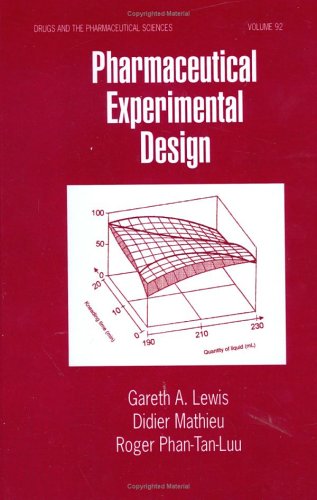

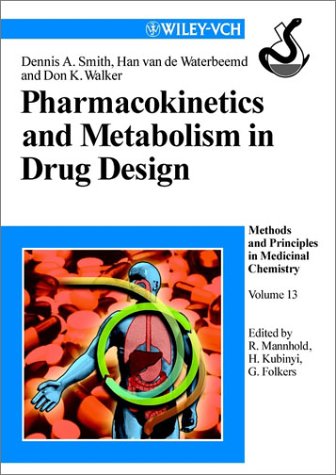
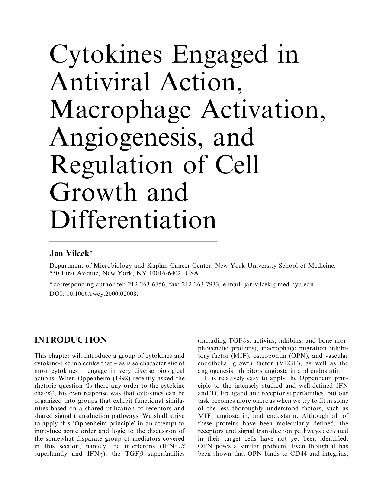
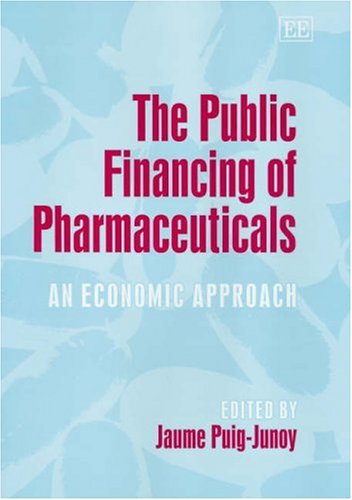
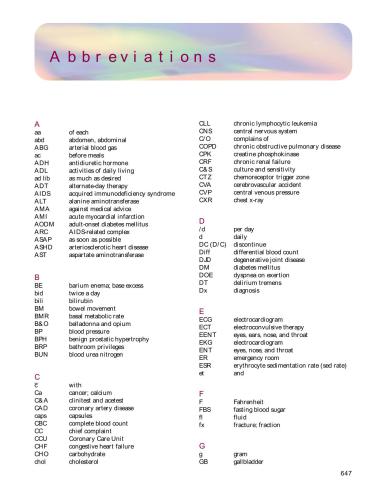

Reviews
There are no reviews yet.